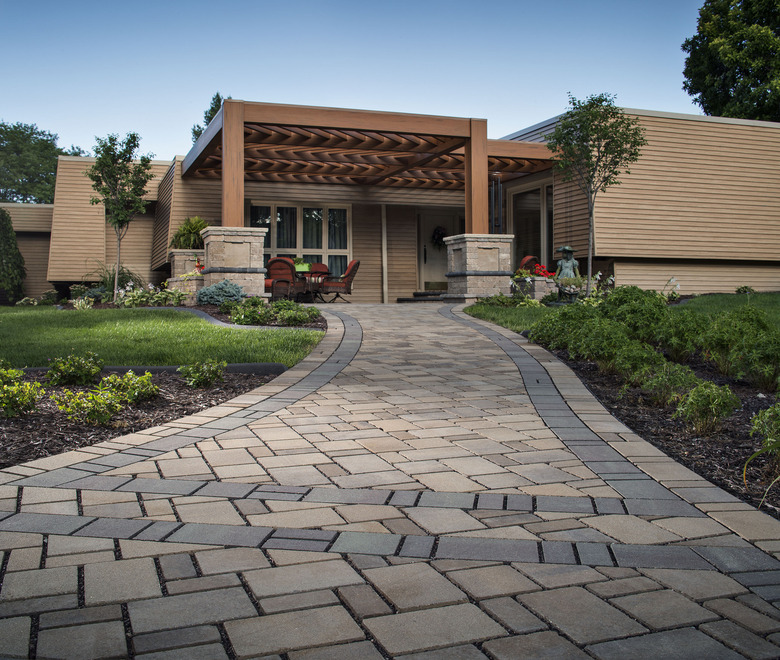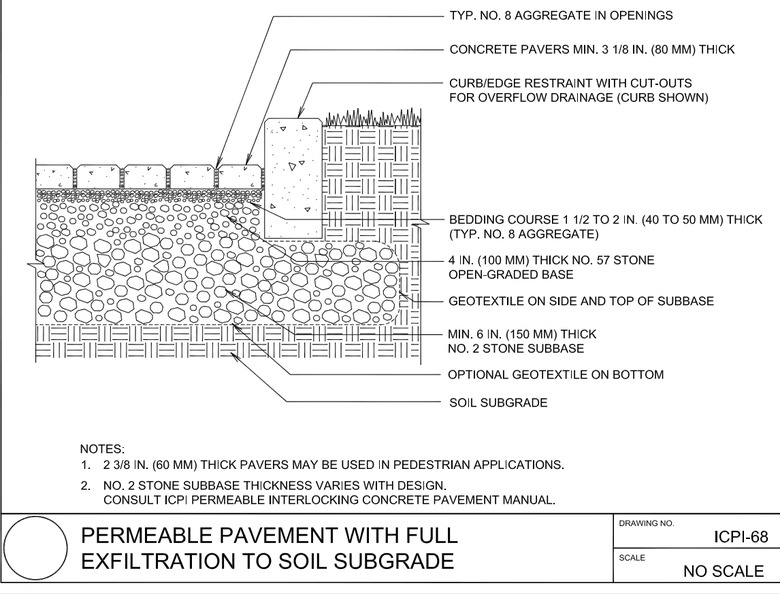Permeable Pavers: What You Should Know
Water from a heavy rainstorm that flows over paved surfaces, such as driveways, patios and walkways, not only increases the possibility of flooding, it also picks up residues of oil and gas, as well as pesticides and insecticides and other impurities. When these pollutants flow into storm drains, they usually find their way into a river, stream, ocean or some other body of water. In many heavily developed areas, runoff is a growing concern, and some municipalities have started limiting the total amount of paved surface area allowed on building lots.
Permeable Surfaces
Permeable Surfaces
One solution to the runoff problem is to create hardscapes using permeable pavers. Unlike standard concrete, asphalt, and concrete and stone pavers that keep water above ground, permeable materials absorb the water and let it pass through into the soil. The most common permeable materials are porous asphalt, pervious concrete, plantable turf systems and permeable concrete and recycled pavers. The first two systems are primarily used in commercial applications; turf systems, which consists of a grid that can be planted with grass, are used mainly for parking areas. Permeable concrete pavers are the most popular residential option.
All permeable systems operate in a similar fashion. Surface water seeps through the material into a base layer that consists of stone and aggregate that stores the water until it can seep into the surrounding soil in a natural fashion. The result is little or no runoff.
Concrete Permeable Pavers
To the untrained eye, it is difficult to tell the difference between standard concrete pavers and permeable concrete pavers. The difference lies not so much in the look of the paver but in the joints between pavers. When installed, standard interlocking concrete pavers have narrow joints that are usually about 1/8 to 1/4 inch wide. The joints are filled with dense masonry or bedding sand that is almost fully impermeable to water. Permeable concrete pavers, on the other hand, have wider joints, up to 1/2 inch, and the joints are filled with fine gravel that allows surface water to pass through. The Interlocking Concrete Pavement Institute estimates that permeable pavers can drain 4 to 9inches of rain per hour.
There are also differences in the pavement base used in permeable systems. Standard pavers rest on a thin layer of bedding sand and then 4 to 6 inches of paver base. A permeable paver installation consists of layers of aggregate and gravel with small sizes directly under the pavers and larger stone at the bottom of the excavation. And some excavations can be as deep as 20 inches, depending on the draining characteristics of the surrounding soil. The stone holds the drained water until it can seep into the surrounding soil. In slow-draining soil, drainage pipe may also be part of the system.
Permeable concrete pavers are available in a variety of colors and shapes. It is easy to remove and replace pavers for maintenance, and there are no extra requirements for snow plowing. Expect to pay a 20 to 40 percent premium for permeable pavers over standard concrete pavers. The pavers themselves are a little thicker, especially when used on driveways, and there are extras labor charges for the excavation and installation.
Recycled Permeable Pavers
For those who prefer using recycled materials, there are recycled pavers available that can be part of a permeable system. One system, produced by Azek, consists of pavers that are made from 95 percent recycled rubber and plastic. The pavers themselves come in different sizes and five colors.
The installation below ground is similar to that for permeable concrete pavers, but the heart of this system is a rigid plastic grid that holds the pavers in place. Depending on the layout of the grid, the installer can place the pavers in a number of different patterns, including running bond, basket weave, herringbone and others. The manufacturer says the grid system produces a uniform appearance and speeds the installation process. Recycled pavers are very lightweight, so check with the manufacturer if you plan on using them on a driveway. Material costs are similar to high-end permeable concrete pavers.
For homeowners or communities sensitive to environmental issues, installing permeable paver hardscapes offers an excellent means of dealing with stormwater runoff.

